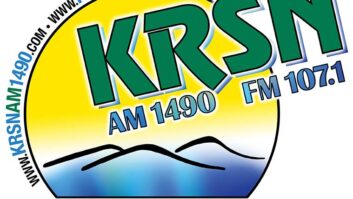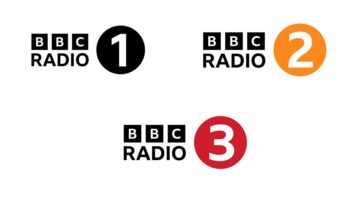
XHNK(FM) in Nuevo Laredo was one of the first stations broadcasting HD Radio in Mexico. The building façade features a stylized ‘R,’ the Radiorama group logo. Engineers from around Northern Mexico participated in an IBOC training meeting. Also among them is Paul Gregg of Bauer Transmitters, front row, second from left. Photo by John Schneider, iBiquity
MEXICO CITY — HD Radio, the in-band, on-channel system developed by iBiquity Digital Corp., will be chosen as the standard for terrestrial digital radio in Mexico, according to the country’s broadcast regulator, the Comisión Federal de Telecomunicaciones.
Cofetel Commissioner José Luis Peralta said that Mexico had decided for IBOC because it’s an easy way for stations to maintain analog signals while adding simultaneous digital operation.
IBOC proponents in the United States believe Mexico and Canada were just waiting to see how HD Radio was going to play out in the U.S. before adopting it in their respective countries. A total of 1,973 U.S. stations broadcast at least one HD Radio signal as of mid-March, according to iBiquity.
The Mexico decision is expected to be adopted formally at the next Cofetel meeting this spring. The date was not set as of mid-March.
Cofetel also is still trying to get buy-in to the IBOC decision from a group of broadcasters who favor Mexico’s adoption of the Eureka-147 DAB standard, according to sources.
“The primary problem for Eureka in Mexico is that here the L-band is used for maritime transmissions and space communications,” Peralta said.
Cofetel has leeway in deciding upon a digital standard for the country following a 2009 decision by the nation’s highest court determining that Cofetel is the exclusive regulator for broadcasting in Mexico. Previously some of its decisions had to be approved by or made in consultation with the Ministry of Communications and Transport (the Spanish acronym for which is SCT).

José Avedillo is the engineering manager at Radiorama in Nuevo Laredo. XHNK bought a V10 Nautel solid-state FM transmitter for the analog/digital broadcasts. The station is airing two multicasting channels. Photo by John Schneider, iBiquity Leeway in decision
The choice of HD Radio was somewhat predictable, according to those interviewed for this article.
On May 14, 2008, the government published guidelines for stations wishing to adopt HD Radio within about 200 miles of the northern border. Under the guidelines, transition was voluntary and focused on meeting the needs of listeners and advertisers in the region of the U.S.-Mexico border.
Since then, of the 187 authorized stations in the border region, 11 AMs and 10 FMs have launched hybrid analog/digital operations.
According to media expert and university professor Fernando Mejía Barquera, the pioneering groups include Grupo Fórmula with five AM stations; Grupo Gape with four stations in Tamaulipas; Uniradio with two stations in the Mexican state of Baja California; and Mega Radio de México with two stations in Chihuahua.
Radiorama, Multimedios, MVS, Cadena Baja California and Grupo Palacios each operate a single HD Radio station in the region.
In addition, said Mejía Barquera, there are one independent station and two broadcasters licensed to Mexicans but operated by U.S. companies to cover the San Diego market from Tijuana.
The station recognized as the first HD Radio station in Mexico by broadcast association CIRT (the Cámara Nacional de la Industria de Radio y Televisión) is XHTY(FM), La Invasora, which launched digital broadcasts with a Nautel transmitter in July 2008. The station is owned by Uniradio, founded by Gustavo Astizarán Rosas, and serves the Tijuana-San Diego market from Tijuana in Baja, California.
Uniradio also was the first Mexican broadcaster to launch a digital multicast channel, airing grupera folk music on its HD1 main channel and a romántica format on its HD2 channel, according to the trade association.
Major investments
Eureka-147 DAB, Digital Radio Mondiale and HD Radio have been tested in Mexico, though there have not been public or industry forums involved in the process to date.
According to John Schneider, manager of business development for Latin America for iBiquity Digital, stations will need to invest the equivalent of $20,000 to $60,000 to ready their transmission systems for HD Radio. The figures do not include any studio or production upgrades that may be involved.
Even considering that not all AM stations will transition to HD Radio — in part because many Mexican stations in the same city operate at 30 kHz or even 20 kHz spacing from one another, not the 40 kHz U.S. for which IBOC AM was designed — the Mexican radio industry, as a whole, will have to invest roughly $280 million to $840 million in transmission infrastructure to adopt HD Radio.
IBiquity notes that while 20 kHz spacing is too close to recommend using IBOC AM, the system has been found in other nations to work “acceptably well” with 30 kHz channel spacing.
Company officials in mid-March declined other comment on a Mexican standard, noting that approval had yet to happen. DRM said it hoped that Mexican authorities would give due consideration to all digital radio standards before making any decision.
Until the decision is official, it’s unknown whether Mexico will approve FM operation at the digital power levels in place in the United States.
AM to FM transition
Another factor influencing the Mexican decision for HD Radio was a September 2008 agreement allowing some AM operators to migrate to the FM band. Although there is not frequency space for all AM operators to move to FM, Cofetel says a “significant” number of licensees are making the transition, which may alleviate some of the problems with 20 kHz spacing for some AMs.

The Jampro JAHD antenna is a panel model with half-wave spacing. The tower is collocated at the studio building in Nuevo Laredo. Photo by John Schneider, iBiquity In July 2009, the SCT and Cofetel published a timetable for AM stations to make the transition based on which of six regions they operate in. However, as of mid-March, no AM stations had made the move to FM because the Ministry of Finance and Public Credit had not validated the formula SCT used to determine the fee for a new FM allocation.
The formula was based on charging the equivalent of about four cents for each listener, population coverage of the station, its market value and technical capabilities.
The 47 broadcasters seeking to move to FM could have to invest as much as roughly $585,000 in license fees and new equipment to make use of the new spectrum.
Once selection of a digital radio standard is formalized, Cofetel also is expected to define the possibilities for broadcasting ancillary and multicast services, as well as develop a program to help cultural, educational and community broadcasters make the transition to digital.
Digital radio in Canada is stalled due to lack of interest on broadcasters’ part, as they seek to avoid the expense of new equipment and as DAB receivers languish on store shelves.
A representative from the North American Broadcasters Association told Radio World in June that Canadian broadcasters are waiting to see what happens with IBOC in the United States.
T. Carter Ross and Leslie Stimson contributed to this story. Gabriel Sosa Plata is a journalist specializing in media and communications based in Mexico City. E-mail him at[email protected].












